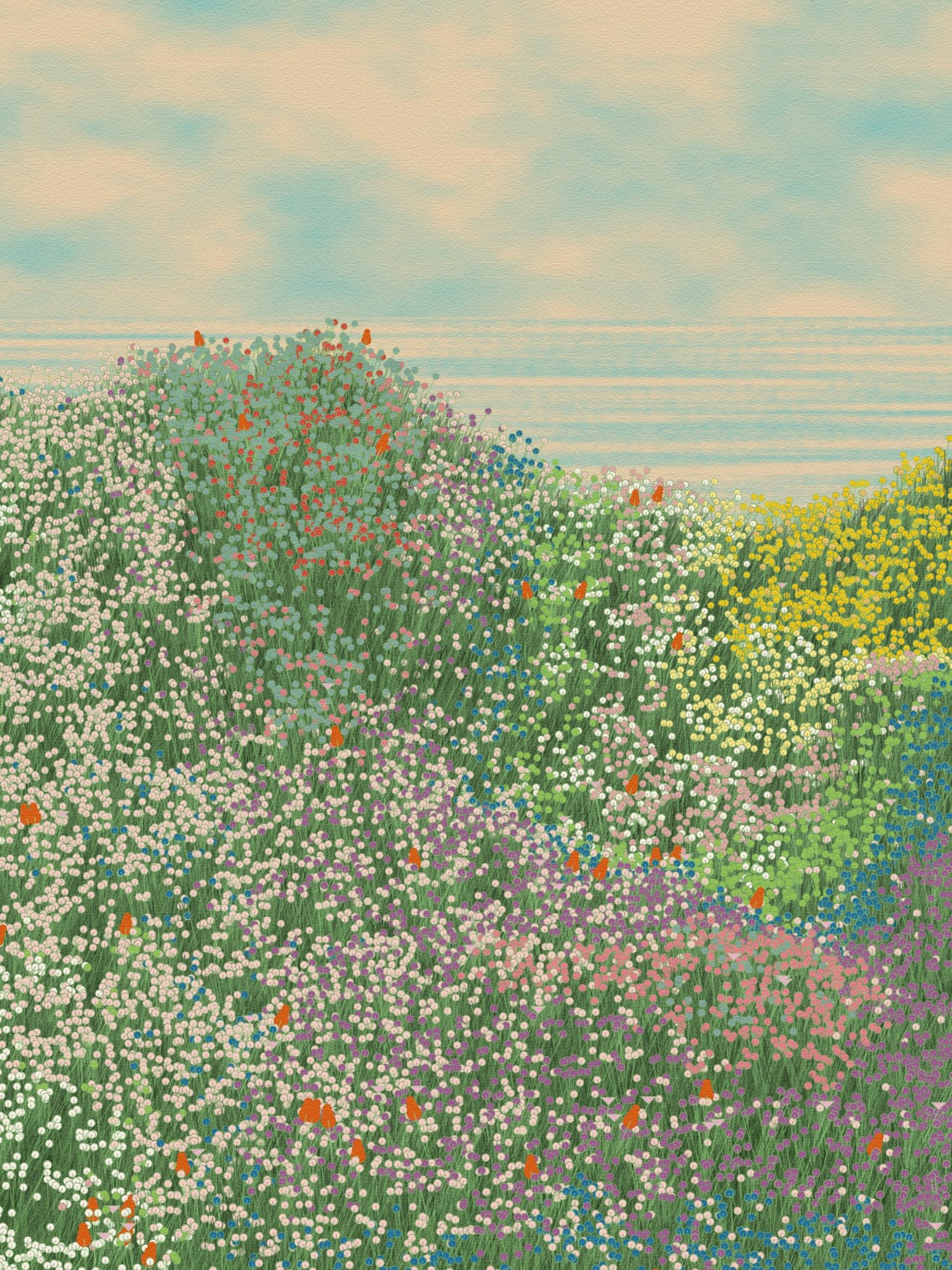N=12 on Feral File 2.0
Aaron Penne’s co-creative microcosm is enriched with weekly meetings, aesthetic critiques, code reviews, and vibrant discussion
July 13, 2023
Collecting starts 9AM EST
On July 13, 2023, Feral File 2.0 will launch its new platform featuring Aaron Penne’s curated exhibition, N=12, an intentional community experiment, with twelve artists collaborating across seven time zones. This selection of generative artists will work together to create a collaborative body of work, demonstrating the ethos of Feral File 2.0.
Contemporary computer artists typically create their work with machines connected to an internet containing near-infinite information. This affords artists the capacity for infinite possibilities. Of course, it is up to the artist to take inputs and make outputs—to distill their experiences into their artwork. The computer artist’s principal tool for creation is also a means of connection. Independently toiling in geographically isolated studios, these artists are mere clicks away from direct interaction with other artists. This exhibition leans into this inherent proximity by explicitly asking twelve artists to create work while in constant dialogue with one another. In doing so, the show makes audible the “wonderfully silent conversations” between artists that Frieder Nake referred to in his foreword to Casey Reas’s “CENTURY” catalog of 2012.
For N=12, the artists had direct and active conversations with each other. Anna Lucia, Nadieh Bremer, Daniel Catt, Reva Fan, Elsif, Lia Coleman, Piter Pasma, RalenArc, Bart Simons, Nicole Vella, ippsketch, and Melissa Wiederrecht convened and collaborated online over several months, sharing their code and artistic processes while fostering a co-creative microcosm enriched by weekly meetings, aesthetic critiques, code reviews, and vibrant discussion. In doing so, they generated work with a dozen distinct fingerprints.
The participants in this exhibition were selected through a democratic process from the Generative Artists Club (genartclub), a behind-the-scenes group of over five hundred generative artists founded in 2018. This group has become a nexus for artists working with systems to discuss works in progress, debug code, share mental health journeys, and connect with other creators from around the world that share their passion for generative art. This group is just one example of artists aggregating their collective efforts; many well-known groups throughout history such as the Batignolles Group (1870s), the Dadaists (1910s), and Fluxus (1960s) have seen artists collaborate to push their respective mediums forward. Unique to digital art, the mediums through which these artists interact are the same mediums through which artworks are created, completed, and distributed. By creating an environment for this organic exchange of ideas, N=12 can serve as the basis for future groups to experiment.
Collaborative creation—from a place of trust and vulnerability—spurs new aesthetic directions, strengthening both the work and the relationships. For example, Elsif initially pursued a composition of mountains in a pointillist style. During group discussion around black and white outputs, she drifted towards a more visceral aesthetic and shifted the entire work to monochrome, then in reaction to that starkness reintroduced color and found a new impressionistic sense of subject and texture. The idea of collaboration itself influenced multiple artists: Reva Fan’s intersecting collisions, ippsketch’s twelve interconnected shapes, Anna Lucia’s woven textures, Piter Pasma’s groupings, Nadieh Bremer’s overlapping lines, Nicole Vella’s clinging forms.
“You put in fragments of an idea… something unexpected always comes out of the machine, and you try to piece it all together.” - Lia Coleman, creator of Emergence
This cross-pollination of ideas pushed each artist towards new technical and aesthetic innovations. Each of their works is created with code written by the artists themselves. This has required artists to be equally comfortable ideating with infinite imagination and instructing a machine to translate these ideas into reality. The Experiments in Art and Technology (E.A.T.) of the 1960s normalized the collaboration of artists and engineers. In contrast, the artists of this show and of Feral File’s Ecotone—indeed, much of this generation—are themselves all hybrid artist-engineers. Not only do they critique each other’s aesthetics, but they also debug each other’s code. In such a context, variables, functions, and logic are as open to influence as color palettes. These artists are not just sharing outputs with each other, they are sharing their innermost processes.
Feral File commissions curated exhibitions of digital artwork and partners with artists and institutions to explore new ways of exhibiting and collecting. Evolving from the art gallery and digital publishing models, Feral File borrows the best traits of each to inform a new kind of art space. Feral File works in tandem with a community of technologists, new media artists, collectors, and curators to redefine and frame a sustainable model for the future of digital experimentation.
Press contact:
Alexandra Fanning | alex@alexandrafanning.com | (347) 468-0735
Artwork Images Full image folder here
About Feral File
Feral File commissions curated exhibitions of digital artwork and partners with artists and institutions to explore new ways of exhibiting and collecting. Evolving from the art gallery and digital publishing models, Feral File borrows the best traits of each to inform a new kind of art space. Feral File works in tandem with a community of technologists, new media artists, collectors, and curators to redefine and frame a sustainable model for the future of digital experimentation.






